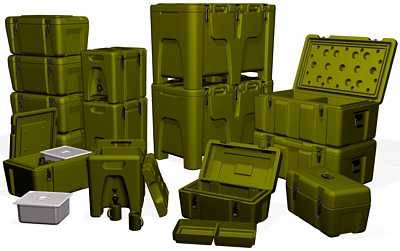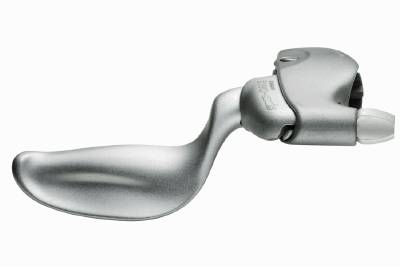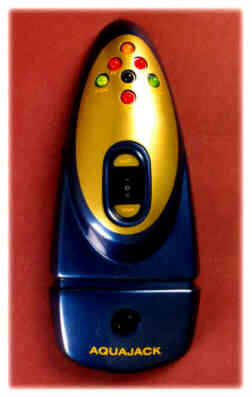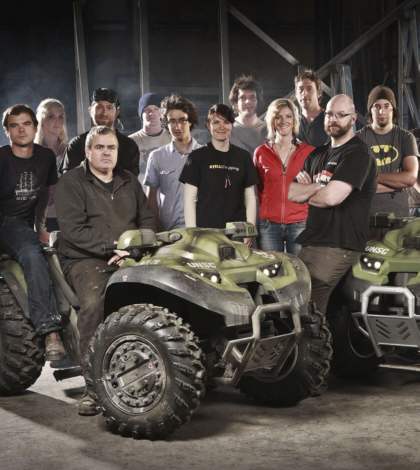 Melbourne based Berry Design & Animation Pty Ltd is a tight operation. Established in 1992, the company specializes in the design, engineering & visualization of consumer products, medical equipment and whitegoods. The software tools they use every day enable Berry Design to incorporate 3D computer animation, rapid prototyping and multimedia in the design process and business of running an energetic design office.
Melbourne based Berry Design & Animation Pty Ltd is a tight operation. Established in 1992, the company specializes in the design, engineering & visualization of consumer products, medical equipment and whitegoods. The software tools they use every day enable Berry Design to incorporate 3D computer animation, rapid prototyping and multimedia in the design process and business of running an energetic design office.
Selecting the primary design software tool for the office was a arduous task for Andrew Berry, principal of Berry Design. The office had made a considerable investment in both Caddsman and AutoCAD software over a significant period of time before deciding that neither were entirely suitable for the kind of work that Berry is involved in. The office moved to SolidWorks in 1997 and has gone from strength to strength ever since.
“After long and careful evaluation, we chose SolidWorks because of the ease of use & ability to create organic shapes in solids with relative ease. Our needs were changing. Toolmakers were expecting quality 3D CAD data for CNC of tools, and our existing CAD software was unable to achieve what SolidWorks was capable of,” said Berry.
“We evaluated two other solid modeling packages, one of which was keenly priced, but SolidWorks came out as the more well-rounded software package, not just engineering focused. Another package we evaluated was simply too expensive for our needs, and had an obviously steeper learning curve, as it was originally a Unix based program, recently ported to NT,” said Berry. The Berry Design office originally purchased a package of PhotoWorks® and SolidWorks.
 “We were initially contacted 2 years ago to design a heavily insulated container for transporting food for the Australian Army. The containers were to be rotationally moulded by Palamont Rotor, and had to be foam filled inside the internal cavity created by the rotational molding process. In the past, a rough 2D drawing was made for the production of a pattern suitable for casting off. This process involved many design iterations, as the client requested modifications to the pattern before production of the tooling could commence. Introducing the SolidWorks design process was crucial in the success of the family of products that were created after the initial container was produced.”
“We were initially contacted 2 years ago to design a heavily insulated container for transporting food for the Australian Army. The containers were to be rotationally moulded by Palamont Rotor, and had to be foam filled inside the internal cavity created by the rotational molding process. In the past, a rough 2D drawing was made for the production of a pattern suitable for casting off. This process involved many design iterations, as the client requested modifications to the pattern before production of the tooling could commence. Introducing the SolidWorks design process was crucial in the success of the family of products that were created after the initial container was produced.”
“We were able to convey to the client all the design features of the container, assembly issues, part weights (vitally important for accurate costing analysis). The client could comfortably visualize the design while still in the design stage, before any physical representation at all had been made. Many design issues were ironed out at the early stage of the design process, which reduced the time to market of the product by half.”
Another benefit to the client was the creation of the molding dies. Traditionally the patterns used to cast the dies were hand-made by skilled toolmakers. The 3D information is used to cut the casting patterns directly using CNC toolmaking equipment. This saves considerable time in die production and the client receives a design they had already approved in SolidWorks.
The initial project spawned many more over the past two years and has been a huge success to the client. The products are sold to the Australian Army as well as the hospitality industry. The range of products is expected to increase more in the future, with SolidWorks as the main driving force in design and development.
 Andrew Berry is well satisfied with the reliability and efficiency of SolidWorks. “SolidWorks has proven to shrink time to market of our clients’ products. We spend much less time on the conceptual sketching stage of design. Our designs are being created quickly and effectively in SolidWorks. We can quickly conceptualize an idea, modify it on-the-fly, then email the model to our clients using e-drawings or SolidWorks viewer. The client is able to provide almost instant feedback, so there is less hold up in the design process. Clients get a real buzz and feel more involved with the project when they see their design spinning on their computer screen. This has real advantages for us, as less time is spent traveling to and from clients’ premises.”
Andrew Berry is well satisfied with the reliability and efficiency of SolidWorks. “SolidWorks has proven to shrink time to market of our clients’ products. We spend much less time on the conceptual sketching stage of design. Our designs are being created quickly and effectively in SolidWorks. We can quickly conceptualize an idea, modify it on-the-fly, then email the model to our clients using e-drawings or SolidWorks viewer. The client is able to provide almost instant feedback, so there is less hold up in the design process. Clients get a real buzz and feel more involved with the project when they see their design spinning on their computer screen. This has real advantages for us, as less time is spent traveling to and from clients’ premises.”
Berry also produces preliminary detailed drawings for tooling quotation’s. “All we need for indicative tooling prices is a few key dimensions to convey the overall picture to toolmakers. Drawing views & dimensions are a snap.”
Rapid prototyping (RP) is a major component of Berry’s design process. Designers can produce highly accurate STL files for stereolithography (SLA), selective laser sintering (SLS) & laminated object manufacturing (LOM) RP processes very quickly. “This helps us to evaluate design intent before costly tooling has begun. For larger parts where these RP techniques are simply not feasible, we prototype designs using CNC methods. SolidWorks has proven to be very reliable,” said Berry. “We have implemented several major upgrades since first installing the software. To SolidWorks credit, the enhancements in each instance have been excellent, to say the least.”
Designing plastic parts for manufacture involves putting every draft angle, fillet & rib down to the very last detail. Toolmakers require all details as they are using our 3D data to drive their CNC machines. “This means that our models end up quite complex,” said Berry. “We have designed & modeled many large products that have really tested the limits of the software. SolidWorks has held up extremely well. Exporting information for toolmakers has never been a problem.”
Berry Design and Animation Pty Ltd








